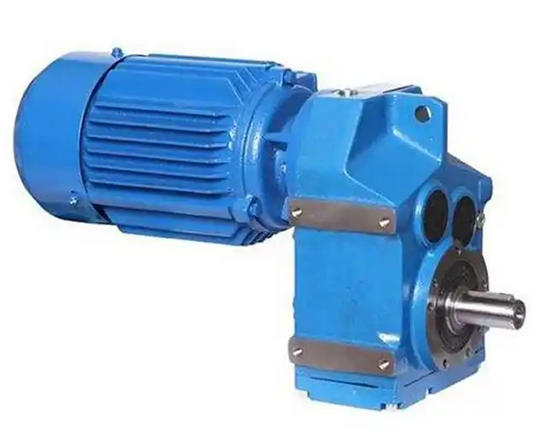How to check the running status of F87-NA29-7.5KW reducer bearings after installation
After the installation of F87-NA29-7.5KW reducer bearings, the operating status needs to be evaluated in three stages: static testing, dynamic monitoring, and performance verification to ensure that the bearing installation is qualified and free of potential faults. The following are specific testing methods and judgment criteria:1、 Static detection (when installed but not turned on): Check for mechanical interference and installation accuracy
Static detection is the foundation, with the aim of discovering mechanical deviations or component damage that may occur during installation, in order to avoid exacerbating faults after startup
Manual rotation inspection: Perceive flexibility and jamming

Operation: Slowly rotate the input shaft and output shaft of the reducer by hand (3-5 turns each), and feel whether the rotational resistance is uniform.
Qualification criteria: Smooth rotation without obvious "stuttering", "abnormal noise" or "heavy weight" (if the resistance suddenly increases at a certain angle, it may be due to impurities in the bearing raceway, deformation of the cage, or bearing deflection during installation).
Axial and radial clearance detection: verifying fit accuracy
Axial clearance: Push and pull the shaft end along the axial direction by hand, and there should be no obvious movement normally (allowable clearance ≤ 0.05mm, can be measured by a dial gauge: the gauge head is against the shaft end, and the pointer swing when pushing and pulling the shaft is the axial clearance). If the clearance is too large, it may be due to loose fit between the bearing inner ring and the shaft neck, or incorrect selection of bearing model (such as inconsistent clearance level).
Radial clearance: Use a dial gauge head to vertically press against the outer circular surface of the shaft neck (near the bearing), fix the housing with one hand, and pry the shaft end up and down with the other hand. The amount of pointer swing is the radial clearance. For deep groove ball bearings commonly used in 7.5KW reducers (such as 6312), the radial clearance of the new bearing should be between 0.02-0.05mm (specific to the bearing manual). If it is too large, it may be due to wear of the bearing seat hole or installation deviation.
Appearance and position inspection: Confirm installation is in place
Check if the bearing end cap is tightly attached to the housing (without obvious gaps), and if the bolts are tightened in diagonal order (the clearance between the end cap and the housing can be checked with a feeler gauge, which should be ≤ 0.03mm).
Check if the outer ring of the bearing is fully inserted into the bearing seat hole (without tilting), and if the inner ring is tightly attached to the shaft shoulder (a ruler can be used to rest on the shaft shoulder and the end face of the bearing inner ring to ensure there is no step difference).

